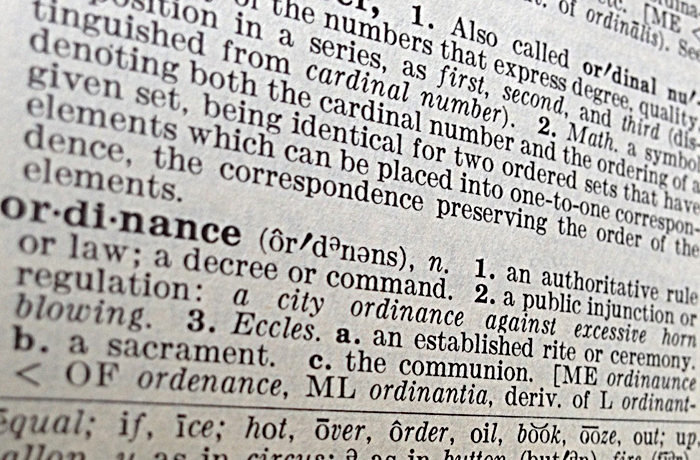
Lighting ordinances

Many people who become concerned about light pollution want to know what they can do to make a difference in their community. Beyond fixing your own lighting, you can work to get an outdoor lighting ordinance adopted in your community.
Outdoor lighting ordinances or codes are great for ensuring that municipalities implement good, safe outdoor lighting. A well-written ordinance, with proper lighting installed, will save the public money and increase safety. Thousands of cities have adopted such codes, and they can be an excellent tool for a community to control light pollution, including glare, light trespass, and sky glow.
On this page, you’ll learn:
- How to identify whether your community has an outdoor lighting ordinance
- How to ensure that an outdoor lighting ordinance is enforced
- How to advocate for an outdoor lighting ordinance
How to identify whether your community has an outdoor lighting ordinance
First, contact your local government directly and ask, or check your city’s website to see if you can search its codes and ordinances.
If you can’t find the relevant codes and ordinances on the website, try your favorite search engine using your city’s name and “municipal code.” That should reveal where the city publishes its codes and ordinances.
Once on the city’s website, search using terms such as:
- Outdoor lighting
- Exterior lighting
- Light pollution
- Light trespass
Your search may turn up policies regulating specific lighting types; a common example is language in an ordinance regulating outdoor signs that incidentally mentions lighting. Look for search results that suggest a general and freestanding policy, which tends to be comprehensive in nature. Often, these sections will be headed with simple descriptive titles like “Outdoor Lighting.” If you don’t find this, it’s a good bet that your community doesn’t have an outdoor lighting policy.
How to ensure that an outdoor lighting ordinance is enforced
If your community has a lighting code, read it and try to understand what it does and doesn’t say. Look to see when it was adopted and if it has ever been revised. It may be that the code was adopted a while ago and needs to be updated.
Once you understand the requirements in the code, check it against the reality of the local nighttime environment. Even the best codes don’t work if they aren’t being enforced.
Many towns and advocates think adopting a code is the end of their efforts. Instead, it’s often merely the beginning. Continuing education is critical. Otherwise, a community might forget why it adopted the original code and how it helps its citizens. If that has happened, it may be necessary to reeducate local leaders and city staffers to make sure the code is enforced.
The details of code enforcement may or may not be spelled out in the outdoor lighting ordinance, so check the code to be sure. Many ordinances are complaint-driven, but there are things to consider before making a complaint about someone’s lighting.
- DarkSky recommends always having friendly, neighborly discussions with lighting offenders before making a complaint to local government.
- Some codes have a grandfathering provision exempting lighting that was in place before the ordinance was passed. Many older light fixtures may be exempt if your city has such a provision. There may be other exceptions or conditions in the code, so be sure to look for those before making a complaint.
If a complaint is valid, then city officials might need to make a nighttime site visit to verify the claim. Often they’ll be reluctant to — that’s understandable as most of us don’t want to work beyond our regular work schedule.
Stick to the facts (rather than making an emotional appeal), but be persistent when discussing your concerns with city officials. Remember that while your city works for you, it’s likely that the code enforcement office has too much to do and not enough resources to get everything done at once.
How to advocate for an outdoor lighting ordinance
Getting an ordinance passed can be a lengthy process. An excellent way to start is to make an appointment with a member of city staff, such as the mayor or your representative on the city council. (For a personal, detailed explanation of how to get a lighting ordinance enacted, see guest blogger Bob Gent’s post.)
Don’t worry if your first meeting ends up being a short one. It’s entirely possible that your local officials don’t know what a lighting ordinance is or why one would be needed. It’s also important to be prepared with relevant and objective information (you might want to check out our Lighting for policy makers page).
Keep the discussion focused on the positive outcomes for the city and anticipate any questions the officials might ask about costs and safety issues.
Let them know that many cities have already passed outdoor lighting ordinances and that having one can benefit a community by reducing glare and light trespass while promoting energy conservation and healthier neighborhoods.
DarkSky has many resources that can assist you, including sample ordinances and a Model Lighting Ordinance (MLO) developed cooperatively with the Illuminating Engineering Society.
In developing a new ordinance, many important factors will be considered. Beyond the basic shielding requirements, DarkSky recommends that an ordinance address the five principles for responsible outdoor lighting.
There are a host of other questions that need answering, including
- Should lighting zones be adopted?
- Are any special considerations needed to protect environmentally sensitive areas or an astronomical observatory?
- Should the new rules be applied to older, non-conforming lighting?
- Should there be a timeline for when all lighting must be brought into compliance?
Questions such as these will likely draw strong and conflicting opinions, but with enough perseverance and community support your efforts will be rewarded. Remember to advocate for the positive outcomes — your city will have a better quality of lighting at lower operational cost, and it will save energy by eliminating wasted light going up into the sky. This is a win-win solution for everyone!



















